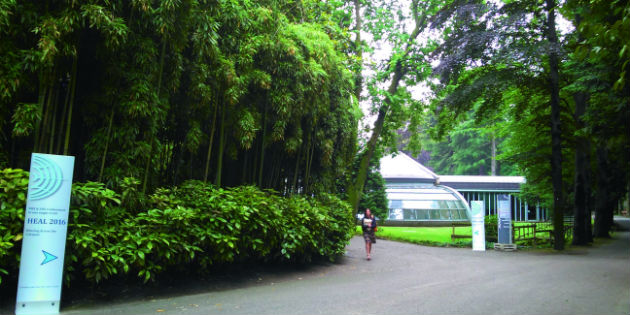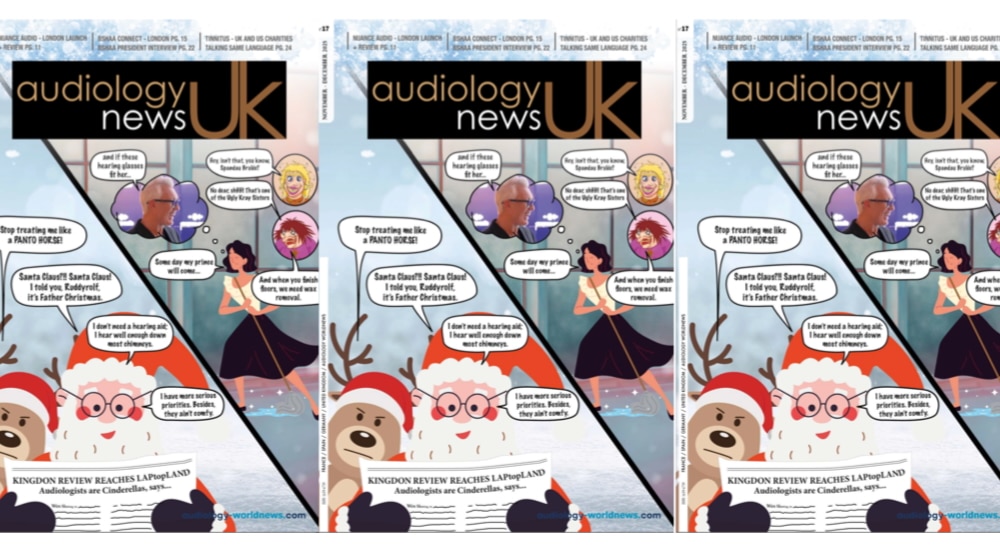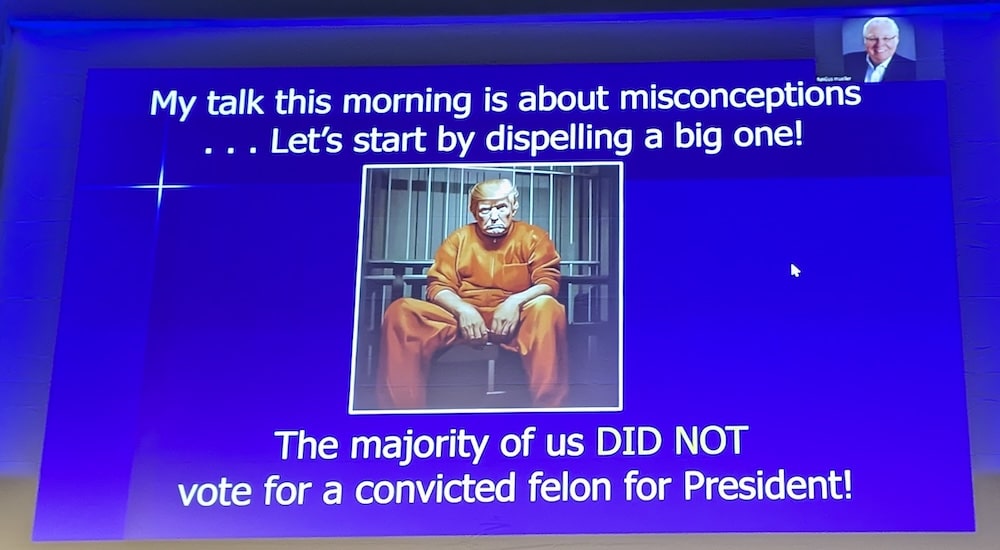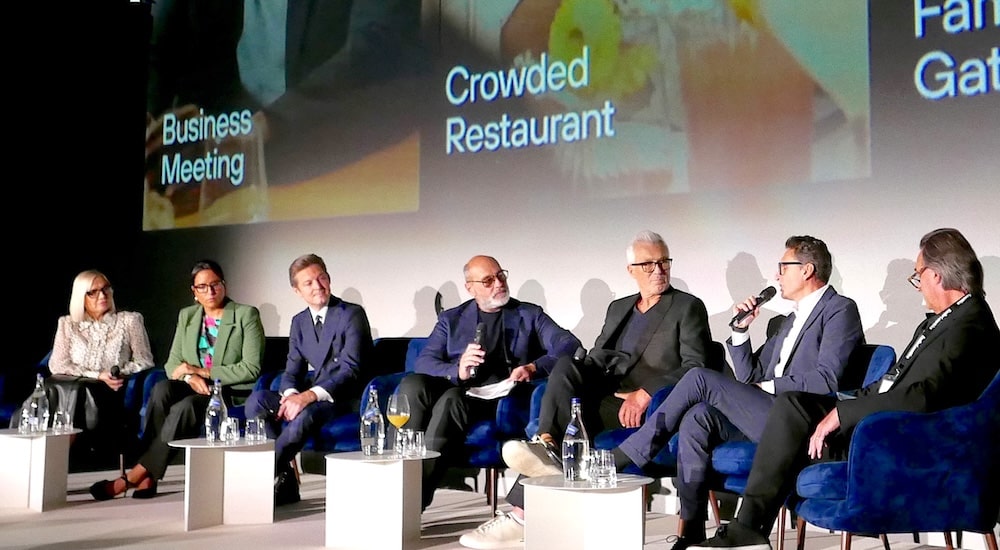International HEAL 2016 at Lake Como/Italy: Getting used to the ideas of the future
HEAL 2016
From 2 to 4 June, Cernobbio was once again a hive of activity for the event that has taken place every two years for some time. Professionals and experts in hearing and hearing health came from more than 60 countries to discuss the latest news in the areas of research, diagnostics, rehabilitation findings, and health policies.

Carrying out and sharing scientific research
It is always enriching to participate in the audiology conference of Cernobbio, in the beautiful grounds of the Villa Erba Conference Center on Lake Como.
The HEAL – HEaring Across the Lifespan – is the meeting that takes place every two years and that has been organized for more than 20 years by Ferdinando Grandori and his research group at the Polytechnic of Milan that is home to the Institute of Electronics, Computer and Telecommunication Engineering. An event that draws hundreds of participants each time, from all parts of the world: the 2016 edition saw representatives from some 60 different countries, with highly diverse professional backgrounds from professionals in hearing rehabilitation such as physicians, technicians and experts from industrial groups in the sector to representatives of other healthcare disciplines such as pediatrics, neonatology, and infant audiology, as well as specialists interested in health policies at the international level, including representatives from Health Ministries and officials from government agencies. Not to mention researchers and students.
A forum of this type therefore needs to propose subjects from a wide range of topics revolving around technological progress, knowledge sharing, clinical experience, and the results obtained in various parts of the world: preserving hearing ability today involves more than building and spreading awareness, and increasing knowledge among doctors and patients, but rather imagining a world in which communication is the real key to wellbeing.
Demand for hearing healthcare will increase by 40% in the next decade
The scientific program, planned from June 2 to 4, therefore aimed to draw participants’ attention to the state-of-the-art internationally in the area, with ample room for looking at innovations and perspectives that could become important in the next few years and that, in research laboratories, are already a reality.
The opening lecture was entrusted to a faithful friend of the conference – Adrian Davis. He again came from the United Kingdom to Como and, introduced by his American colleague Deborah Hayes, talked about the triad in health, understood as physical health, mental health, and sensory health that is needed in modern practice today. “Hearing loss is the primary cause of disability in England”, he said, underlining how adequate health policy programs must guarantee geographical equality to the world population, and without neglecting to point out how the use, whether excessive or deficient, of quality therapeutic interventions ends up creating inequality. “Demand for hearing healthcare will increase by 40% in the next decade” said Adrian Davis in front of the crowded hall. What is a reasonable objective that audiology professionals should set? The UK expert has no hesitation, “Widespread wellbeing, the triple value of physical, mental, and sensory health, but also equality in the various countries of the world”. The English experience, now consolidated over time, has shown that the action program to tackle hypoacusis and restore hearing ability to those who are affected should focus primarily on prevention, establishing targeted measures based on scientific and clinical evidence, and lastly identifying the necessary funding.
3 days of working sessions
Davis then officially introduced the learning content, opening the first session on auditory function and cognitive abilities, moderated by Larry Humes from the University of Indiana, who also attended the conference.
The working sessions were organized by topic, providing parallel times to enable participants to follow the same strand of interest or move from one topic to another. A series dedicated to clinical research looked more closely at listening effort, speech tests in children, disorders of auditory neuropathy, functional results of cochlear implants, implantology in adulthood and in the elderly, single-sided deafness corrected by implants or bimodal stimulation, and the cytomegalovirus and the genetics of deafness.
Another series presented an update on early diagnosis and intervention programs carried out in various countries represented at the conference, together with the results obtained, but also development of global health policies, preschool and school-age hearing screening, support services for those in need of hearing rehabilitation, and the epidemiology of age-related hearing problems.
A third broad topic was so-called e-health or digital health (watch here an interview with Ph. D. Gabriella Tognola, senior researcher of the Italian National Council), that held multiple surprises for the audiology sector, assuming scenarios that are not at all futuristic on the use of hearing aids, and possibilities that were unimaginable just a few years ago, such as self-testing via the internet, self-fitting of hearing aids, use of apps in rehabilitation programs, technological developments, signal processing protocols, creation of subjective and behavioral tests, and changes in screening and diagnostics. These sessions proposed an overview of trends and challenges that are just around the corner and that will necessarily concern professionals directly and that they need to be aware of.
A final working group looked into services to patients to improve hearing health, the role of families, good practices, using technology, and medical etiology.
Read and watch more on the HEAL conference on our Italian website .
Photos: C.P.
 Sign in
Sign in

